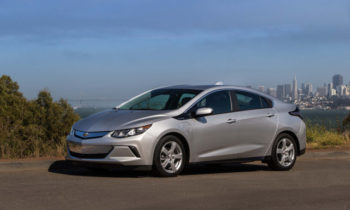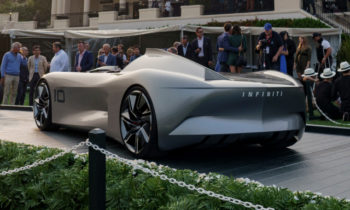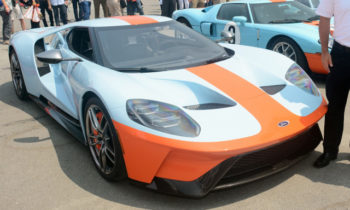
The engine drives through a six-speed manual gearbox and a new and much trumpeted Ford Performance all-wheel-drive system with dynamic torque vectoring control. Ford says it’s hard to pinpoint a torque split as it’s constantly variable, but as a ballpark figure imagine it running 40:60 front-to-rear as a starting point, although up to 70 percent of the torque can go rearward if necessary. Two clutch packs in the rear power transfer unit also continuously transfer the torque side-to-side. As much as 100 percent of the torque going to the rear axle can be directed to the outside wheel to create a yaw moment and kill pushy understeer.
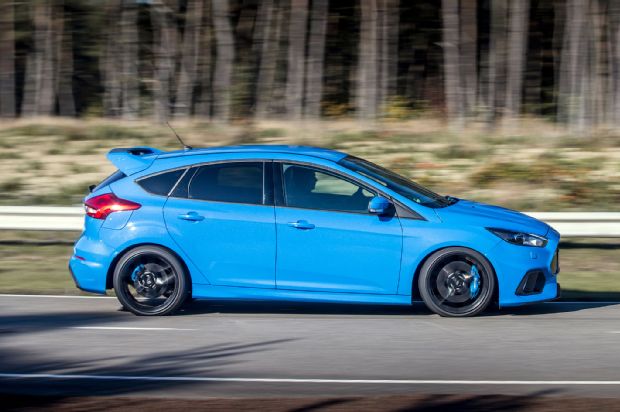
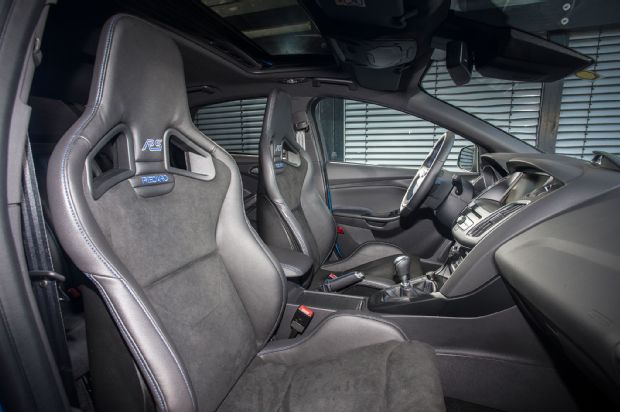
Handling Track No. 7 at Lommel is killer. It’s a little more than 2.5 miles in length and features 20 corners with numerous heaves and falls so you’re always on high alert. Many of those turns are so closely bunched that there’s little time for a car’s chassis to settle. The Focus RS was primarily developed here, so it’s a fair bet it’ll have all the answers, but even so it’s a mark of confidence that we’re on this incredibly tortuous circuit at all. There are few roads or tracks in the world that offer a sterner test. Our RS is set to Normal, the base setting for engine response, the four-wheel-drive system, electronically adjustable dampers, and the ABS and ESC stability control. It’s go time.
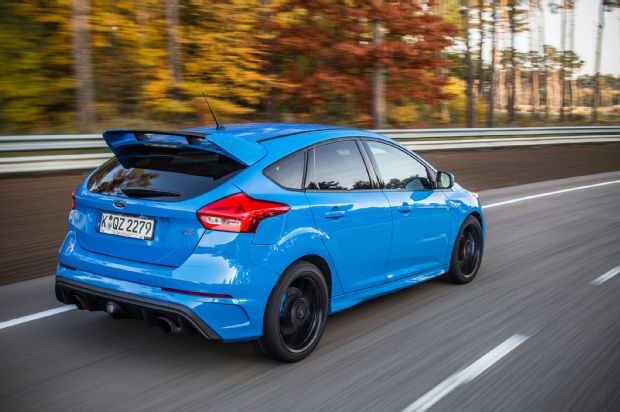
Of course you want to know about the lifeblood of RS – its on-limit handling and the rush of its turbocharged engine. But you can’t help noticing little details at first. The seat – the optional Europe-only hard-shelled Recaro – is set a little too high; the gearshift’s action is slightly long and loose; the engine, in Normal mode at least, sounds a bit tame. I almost immediately find myself selecting Sport mode, and the car starts to reveals its edge as the excitement ramps up. It really needs this sense of tension because it’s clear that in terms of interior quality and execution, the RS lags behind the Golf R.
It does things that the VW can’t do, though. Things that no other hot hatch I’ve driven can do. In Sport mode, the urgency you’d expect is there, the engine pulling with real energy in the midrange and not fading until the limiter cuts in. Perhaps it doesn’t feel quite as strong as the claimed 4.4-second run to 60 mph suggests, but it’s feisty nonetheless. There’s more body roll than I’d expected, considering spring rates are up by 33 percent at the front and 38 percent out back over the Focus ST. But that only enhances the feedback that pours back through to the driver’s seat, allowing you to use the weight transfer in combination with the agility and balance created by the all-wheel-drive system to dissect a corner with confidence and pinpoint accuracy.
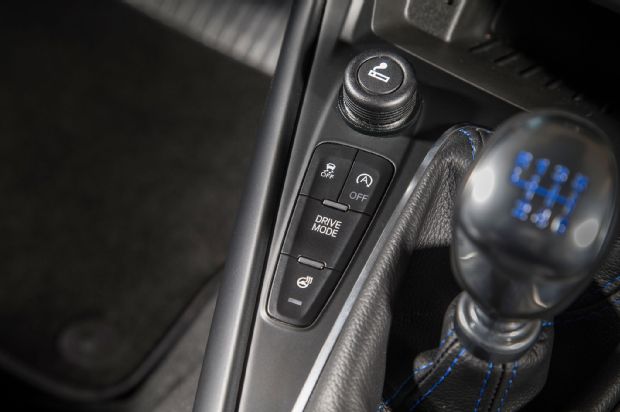
In Track mode the RS is more locked-down, the 40 percent stiffer dampers help keep body movements tightly in check (although you can select less aggressive damping on a separate switch). Johnson says this mode is purely for the racetrack, but I’m sure that on smoother sections of road it’ll work just fine. What you lose in terms of corner-exit oversteer you more than make up for in terms of precision and agility during fast direction changes. There’s one lovely section of the Lommel circuit where a left-hander leads into a long right, both taken in third gear. You have to brake while still turning left, and the tail slips wide as you do. A little flick to the right catches the slide and sets the pendulum swinging the other way. You don’t need any corrective lock, just keep the 2.3-liter turbocharged-four howling and drive through the turn, sliding gently sideways but driving hard out of the turn in a perfect four-wheel drift.
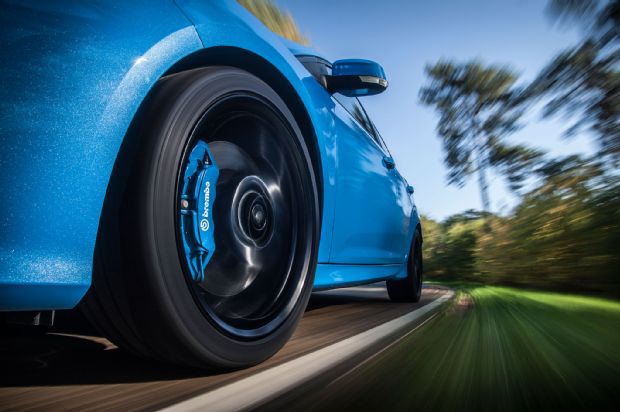
In this environment the all-wheel-drive system’s ability to give you options is the star of the show, but the engine does find its voice in Sport and Track modes, crackling and thudding on the overrun and with a hard-edged bark as it spins towards the limiter. I can’t help thinking it should feel more extreme, though. It’s a quick car but doesn’t feel bursting with performance like an A45 AMG, for example. The four-piston monoblock Brembo brake setup doesn’t feel quite as impressive as I’d expected either, the pedal lacking that solid pedal feel of the best setups and with a slightly long travel. It should be said these were pre-production cars, so perhaps that will improve by the time cars hit U.S. soil.
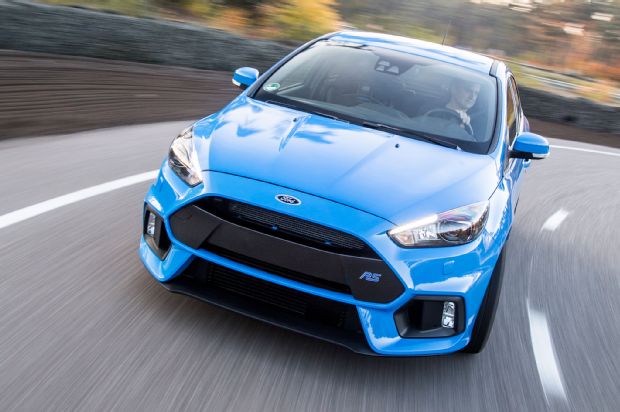
And Drift mode? Essentially it sends as much power as possible to the outside rear wheel to create oversteer and then equalizes the torque between the rear wheels to maintain the slide. On the skidpad it’s great fun, quickly settling into big, smoky slides but still retaining an all-wheel-drive feel. It hardly requires any steering correction at all. On the road or a normal racetrack? I suspect it’ll feel a bit artificial and gimmicky.
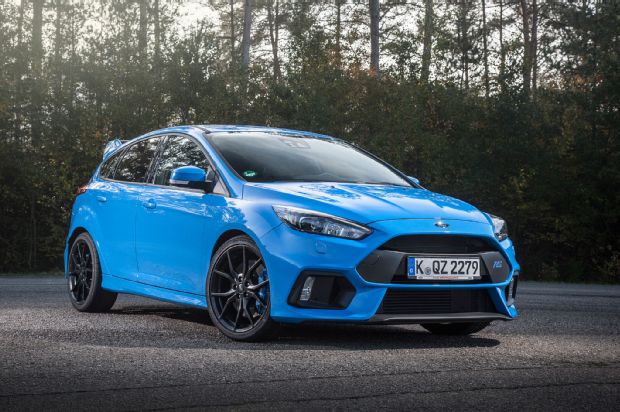
2016 Ford Focus RS Specifications
| On Sale: | Spring |
| Price: | $36,605 |
| Engine: | 2.3L turbocharged DOHC 16-valve I-4/350 hp @ 6,000 rpm, 350 lb-ft @ 3,200 rpm |
| Transmission: | 6-speed manual |
| Layout: | 4-door, 5-passenger, front-engine, AWD hatchback |
| EPA Mileage: | 21/29 mpg (city/hwy) (est) |
| L x W x H: | 172.8 x 71.8 x 58.0 in |
| Wheelbase: | 104.3 in |
| Weight: | 3,370 lb (European spec) |
| 0-60 MPH: | 4.4 sec |
| Top Speed: | 165 mph |

